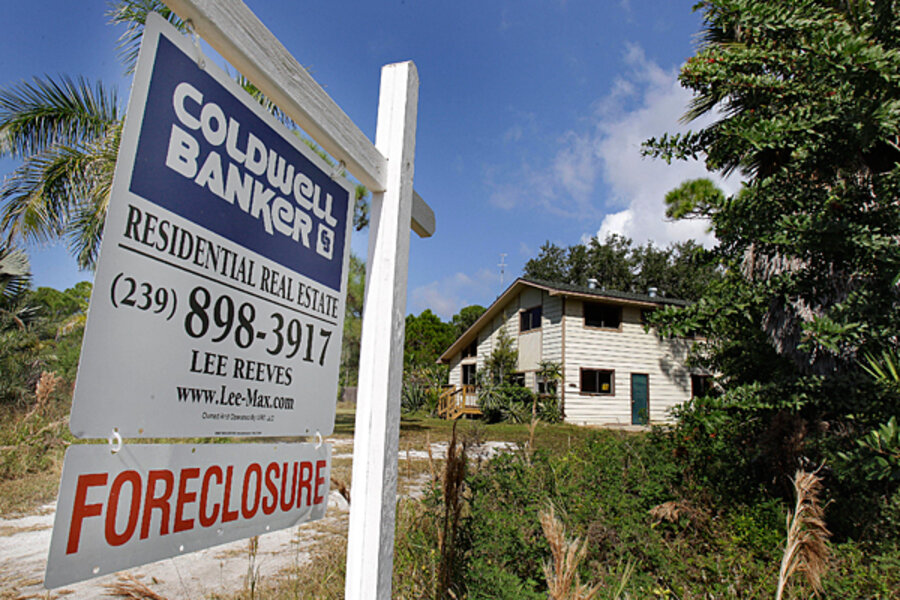Housing market: Which state faces biggest foreclosure risks? New Jersey.
Loading...
A gauge of housing-market distress is showing some improvement, but it remains at levels that could portend high foreclosure rates "for an extended period of time."
That's the conclusion of a report released Wednesday by CoreLogic, a company that tracks real estate conditions nationwide.
By the new estimate, America has 1.8 million units of "shadow inventory" – homes that are soon to hit the market (because of foreclosure) or where mortgage payments are 90 days or more delinquent.
The good news: That's down from 2 million units a year ago, suggesting that the worst of the housing crisis may have passed. The bad news: It's still an unusually high number of distressed properties, on top of an official supply of for-sale homes that's also very large relative to current demand.
For several years, the amount of shadow inventory has been a key factor affecting the broad health of the US housing market, along with unemployment and lending conditions.
Conditions vary widely from state to state. By the CoreLogic analysis, the states with the largest "supply" of distressed properties (measured in months it would take to sell them) are New Jersey, Illinois, Maryland, Florida, Delaware, Georgia, Connecticut, Alabama, California, Washington, and Michigan.
Those states all exceed the national average of nine months' supply of distressed properties that aren't yet for sale.
At the other end of the scale, Mountain or Plains states such as North Dakota, Texas, and Wyoming are in the best shape.
"While the trend of the shadow inventory is improving somewhat, the current level and distressed months' supply remain very high," said Mark Fleming, chief economist for CoreLogic, in a statement accompanying the numbers. The conditions "imply that excess supply will remain high for an extended period of time."
Wednesday's report comes as other indicators also suggest weakness in residential real estate:
• A widely watched indicator of home prices fell for the month of January, Standard & Poor's said Tuesday. The S&P/Case-Shiller index showed declines in 19 of 20 major cities across the country, with a national average dipping near lows hit during the recession. The result is rising talk of a "double dip" in housing, although forecasters don't necessarily see sharp price declines ahead.
• Applications for new mortgage loans declined 7.5 percent last week, the Mortgage Bankers Association said Wednesday. Most of the declines were in the refinance arena, where an uptick in interest rates affected activity. But applications for home purchases "remained roughly flat as we enter what is typically the peak homebuying season," the association's Michael Fratantoni said in a statement.
• The median sales price for previously owned homes was $156,100 in February, 5.2 percent below its level a year before, the National Association of Realtors reported on March 21.
The shadow inventory numbers help put all that in context. The numbers help explain why weakness persists, while the declining volume also offers some hope that the drag of distressed properties may slowly recede with an improving economy.
Given the still-high volume of distressed properties, should federal policymakers seek to strengthen efforts at preventing foreclosures? That remains a hot question today, four years or more after the housing boom peaked.
Banks have been offering loan modifications to many at-risk borrowers. And the Obama administration's Home Affordable Modification Program (HAMP) uses federal dollars to spur more modifications. Where some housing-market experts say these efforts need to be redoubled, others say additional efforts won't do much to help, since so many borrowers are likely to default anyway.
The US House of Representatives voted Tuesday to abolish the HAMP program.
CoreLogic, while not taking sides in its report, said its analysis suggests that even an optimal loan-modification program wouldn't have a huge impact on housing-market conditions.





